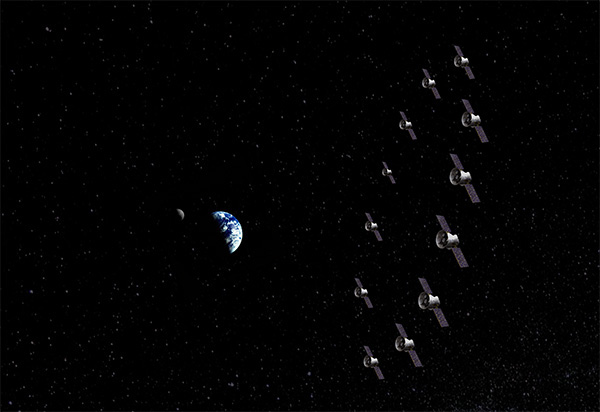Role in Scientific Discovery

Distributed systems enable scientific measurements that are not possible with one monolithic spacecraft.
Benefit to JPL Mission
Distributed systems enables JPL missions to accept higher risk postures for individual assets. By using autonomous systems and miniaturized systems, distributed systems lower operational, manufacturing, and mission costs.
Challenges
To navigate in uncertain environments, image exoplanets, or continuously monitor a phenomenon distributed systems require precise networking of autonomous assets. Each agent must individually sense, analyze, and plan and execute decisions while also communicating and coordinating in real time.
Solutions
- Networked Distributed Systems: relative sensing and control, collective decision-making, thrusters, data integration and fusion
- Precision Synthetic Apertures: autonomous coordination and sensing, absolute and relative precision metrology systems, onboard real time control
- Swarms: distributed stochastic guidance path planning, probabilistic collision avoidance, distributed state estimation, distributed communication technologies
Read more about this topic in JPL's 2019 Strategic Technologies document.